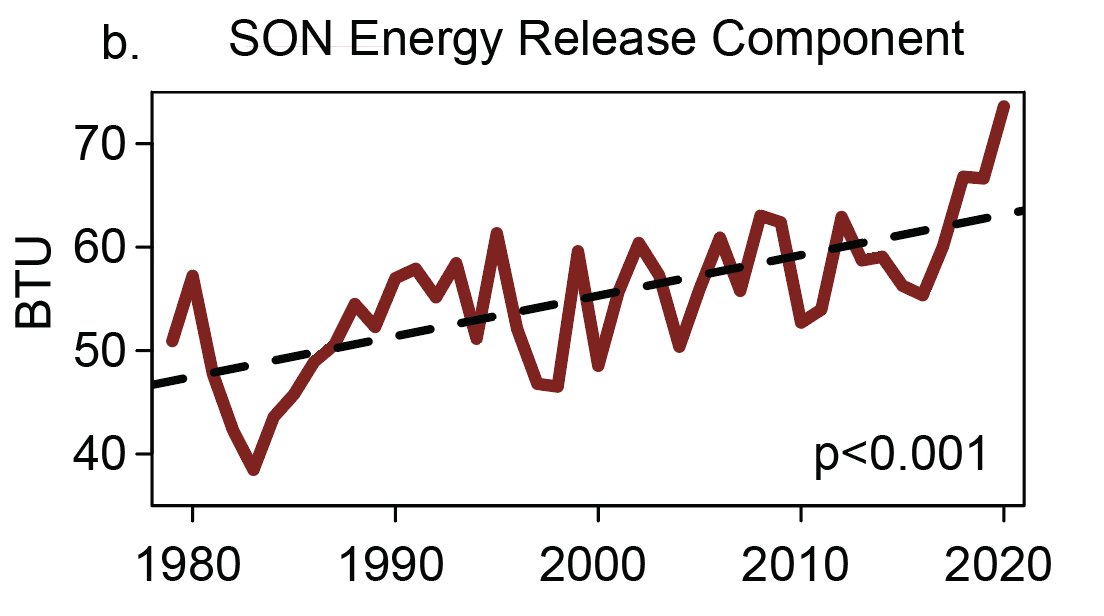
1/New work aimed at resolving the "extreme precipitation-#flood paradox" in warming #climate, led by @ManuelaIBrunner (@UniFreiburg) & including co-authors @Weather_West (@UCLAIoES), @Climate_Done (@C3WE_NCAR), is now out in @CommsEarth (open access!). nature.com/articles/s4324…
2/The "extreme precipitation-flood paradox" arises from fact that despite abundant evidence for increasing rainfall extremes due to #ClimateChange, there is not (yet) a correspondingly clear & systematic increase in flood magnitude. nature.com/articles/s4324…
3/To address this conundrum, we use a high-resolution regional hydrologic model coupled to a high-resolution (single model) regional climate large ensemble (collectively, a "hydroSMILE") centered on hydrologic Bavaria (including parts of Germany, Austria, & Switzerland). 

4/Well-calibrated regional hydrologic model large ensembles remain rare and computationally intensive, but one has been developed by our collaborators at @LMU_Muenchen and we were fortunate to be granted access for the purpose of this study. nature.com/articles/s4324…
5/Our key finding is the existence of a "precipitation extremeness threshold" that dictates the hydrologic response in a warming climate--above which flood magnitudes clearly increase but below which flood magnitude is modulated by land surface processes. nature.com/articles/s4324… 

6/In general, the mechanism for this behavior appears to be related to the competing effects of increasing extreme precipitation (on the one hand) and the soil-drying effects of rising temperatures (on the other) in a warming climate. nature.com/articles/s4324… 

7/This creates a situation in which more "moderate" extreme precipitation events may yield muted increases runoff/flood peaks due to antecedent dryness of the soil & landscape (i.e., the soil has more capacity to absorb water, and less enters rivers/lakes/streams), but... 

8/...But the very most extreme precipitation events (i.e., those with recurrence intervals of ~20-50 years or greater) appear to overwhelm the background soil drying effect and produce large increases in flood magnitude/frequency. nature.com/articles/s4324… 

9/This result is striking, since it suggests that while smaller floods may *decrease*, the largest and most destructive #floods will likely *increase*--meaning the sign of flood hydrologic response to #ClimateChange likely depends on event intensity! nature.com/articles/s4324…
10/Now, the details regarding the exact mechanisms and location of this crossover threshold do vary from catchment to catchment based on hydrologic characteristics, and are probably regionally/geographically dependent as well. 

11/But we argue that the broader existence of such a hydrologic threshold is likely generalizable across much of the world--and there is indeed some emerging evidence for this in observations (see paper for further discussion). nature.com/articles/s4324…
12/These findings have two substantial implications. First, this type of threshold behavior can likely help to reconcile climatological and hydrological perspectives on changing #flood risk in a warming #climate. nature.com/articles/s4324…
13/Previous studies focused on less extreme floods, which have shown little change or even decreases, will likely be unrepresentative of changes in higher-magnitude events: robust statistical signals are unlikely to arise in datasets shorter than 100 yrs. nature.com/articles/s4324…
14/This points to an important and intrinsic limitation of observation-only studies, as well as to the critical importance of large modeling ensembles that can yield larger sample sizes for rare, high magnitude events. nature.com/articles/s4324…
15/Second, this suggests that despite historical uncertainties, large increases in flood magnitude are likely for very largest events--potentially including those unprecedented in modern record (& similar to those which have been observed in recent months).nature.com/articles/s4324…
16/That climate warming may act to decrease magnitude of (more common) moderate flood events, while simultaneously increasing magnitude of (rarest &) most extreme events, points to risk of developing a“false sense of security” based on recent experience. nature.com/articles/s4324…
17/Assuming this finding is broadly generalizable across regions, as we believe is likely, it has major implications for climate #adaptation and #flood risk mitigation activities, as well as infrastructure design, in a warming #climate. nature.com/articles/s4324…
18/Finally, I want to thank lead author @ManuelaIBrunner for being an amazing research collaborator these past few years! I wish her the best in her new role at @UniFreiburg. You can read her own thread on this research here:
https://twitter.com/ManuelaIBrunner/status/1430832961612652545?s=20
• • •
Missing some Tweet in this thread? You can try to
force a refresh












